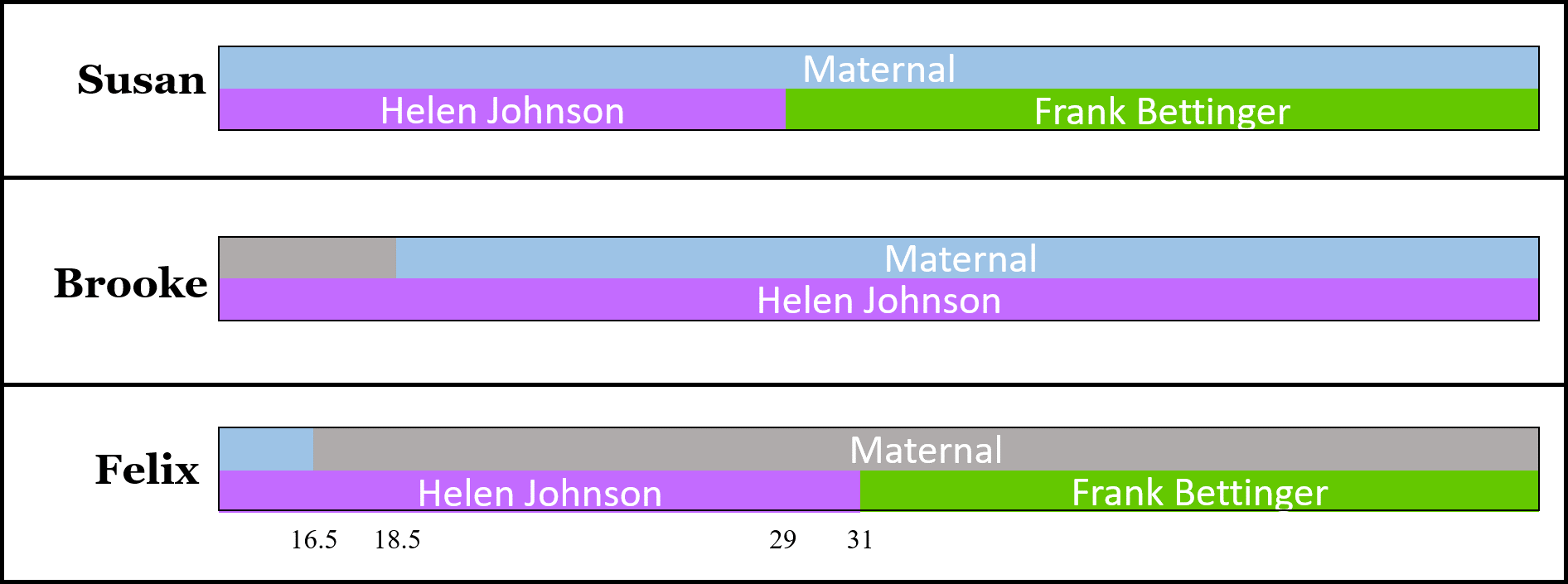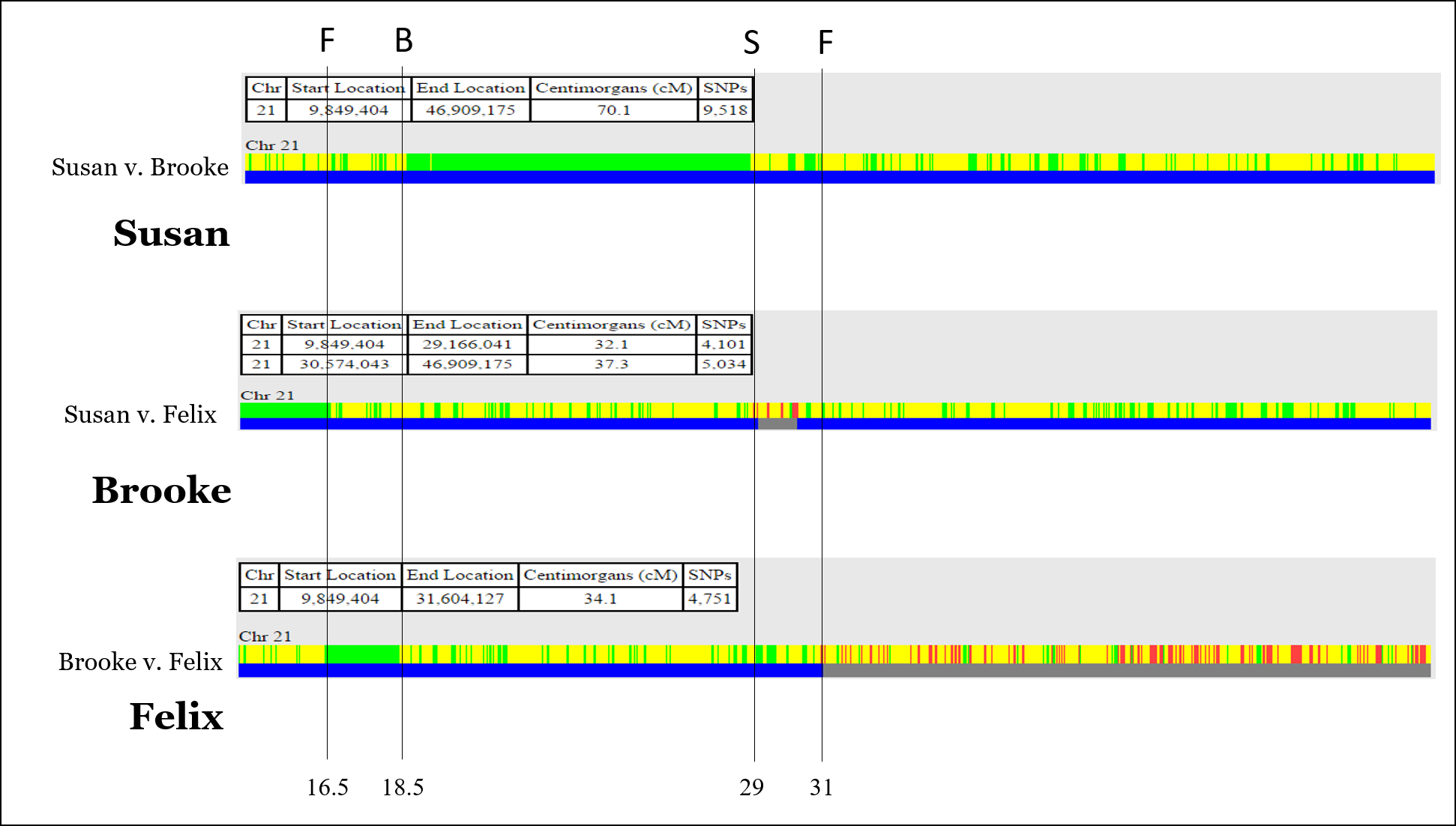Five-Part Series on Visual Phasing:
- Part I – Explaining visual phasing and identifying/labeling recombination points (November 21, 2016)
- Part II – Assigning segments of DNA (November 22, 2016)
- Part III – Using cousin matches to identify which grandparent provided the segments (November 25, 2016)
- Part IV – Mapping my own chromosome using the visually phased paternal chromosomes (November 26, 2016)
- Part V – Using the mapped DNA with new matches (November 27, 2016)
In “Visual Phasing: An Example (Part 1),” we identified and labeled all of the recombination points in the three siblings, Susan, Brooke, and Felix. Then, in Part 2 of the series, we used the identified and labeled recombination points to assign segments of DNA to the four grandparents (the blue grandparent and grey grandparent pair, and the purple grandparent and green grandparent pair). In Part 3 of the series, we used cousin matching to identify the grandparental source of the chromosomal segments. And finally, in Part 4 of the series, we characterized my paternal chromosome.
After Part 3, we had the following for Brooke, Susan, and Felix:
Now that we have this information, let’s see if we can use that to explore new matches with Brooke, Susan, and Felix.



